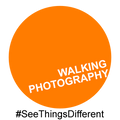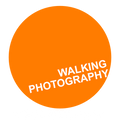Brighter Day = Trickier Photography: 4 Surprising Photography Challenges for Warmer Months (With Work Arounds)

As much as I welcome the arrival of longer days and warmer weather, I’ve found that spring and summer also provide a surprising number of photography challenges that could ruin even the best of locations!
The light lasts longer, the landscapes burst with life and there’s generally more time to get out with the camera—but it’s not all that straightforward. Over the years, I’ve run into a few recurring seasonal issues that can catch even experienced photographers off guard. So I’ve shared four common warm-weather photography problems—and how I tackle them.
1. Heat Haze: The Wobbly Mirage That Ruins a Shot
Sometimes it’s obvious, sometimes it’s so subtle you won’t notice until you’re looking at the image on a big screen. One of the biggest offenders for ruining shots as temperatures climb is heat haze.
Caused by rising warm air near the ground, it creates a shimmering distortion that can blur your images—especially when shooting with a long lens or across open ground like a moor, fields or roads.
Work arounds: I try to shoot earlier in the morning or later in the evening when the ground is cooler and there’s less thermal activity. If that’s not possible, I’ll switch to subjects that are closer to the camera or shoot in shaded areas, where the air is more stable. On particularly hot days, I’ll take it as an opportunity to focus on woodland macro work or interiors—something that naturally avoids the worst of the haze
2. High Sun and Harsh Light: Great for Picnics, Tough for Photography

When the sun climbs higher in the sky (and stays there longer), it throws down a hard, overhead light that can flatten your scenes and cast awkward lighting across the subject. It’s not the most forgiving light to work with—especially for portraits or landscapes.
Work arounds: I plan my shoots for golden hour—the magical hour after sunrise or before sunset when the light softens and glows. If I’m out in the middle of the day, I look for shaded areas (like the edge of a building or under trees) to soften the light. For portraits, a reflector or even a light-coloured wall can bounce light and help fill in harsh shadows.
3. Crowded Locations: When Everyone Wants the Same View
Warmer months inevitably bring more people outdoors. Suddenly that quiet local beauty spot or peaceful riverside path becomes a popular picnic site and getting a clean shot without someone wandering into frame can be frustrating.
Work arounds: My first thought on this problem is, “can I turn it into an opportunity”?! Unsurprisingly many outdoor photographers shy away from busy, crowded spaces, but maybe they’re missing something and maybe that gives us a chance to capture a photo that others miss?
The other solution is to arrive super early. With sunrise arriving earlier and earlier, even the busiest of beauty spots can be deserted at times when the light is ideal for photography.
If neither of those appeal, there is an alternative hack in the form of a filter. Neutral Density (ND) filters reduce the light entering the camera and allow you to slow the shutter speed right down. This means people in the photos can soften or even disappear in the final shot.
4. Foliage Explosion: Great for Greens, Tough for Wildlife Spotting

One of the joys of spring and summer is the abundance of leaves and greenery—but all that foliage can make spotting and photographing wildlife more difficult. The animals are still there, but now they’re much harder to see!
Work arounds: Is not too dissimilar from the advice for crossing the road—Stop, look and listen, with a heavy emphasis on the stopping (waiting) and listening. At this time of year listening can be an essential part of locating wildlife. It can guide you in the right direction and, if you are patient, you can pick out the telltale signs of movement too so you know where to direct your camera.
By simply watching the activity in the foliage, you get to observe behaviours and patterns over time that help you understand where the photo opportunities will be. For example, you can learn which are the popular perches in the morning or evening, which habits the wildlife has at certain times of the day. This helps you set up in the right place at the right time to get the images you want.
Foliage can also help make your photographs more appealing by hiding distracting elements in the background and framing your subject nicely.
Embrace the challenge
Each season brings its own quirks, and that’s part of the fun. The key, I’ve found, is staying flexible and adjusting your approach to match the mood and rhythm of outdoors and nature. So if you find the heat haze frustrating or the crowds are testing your patience, don’t pack the camera away—just shift your focus.




Leave a comment